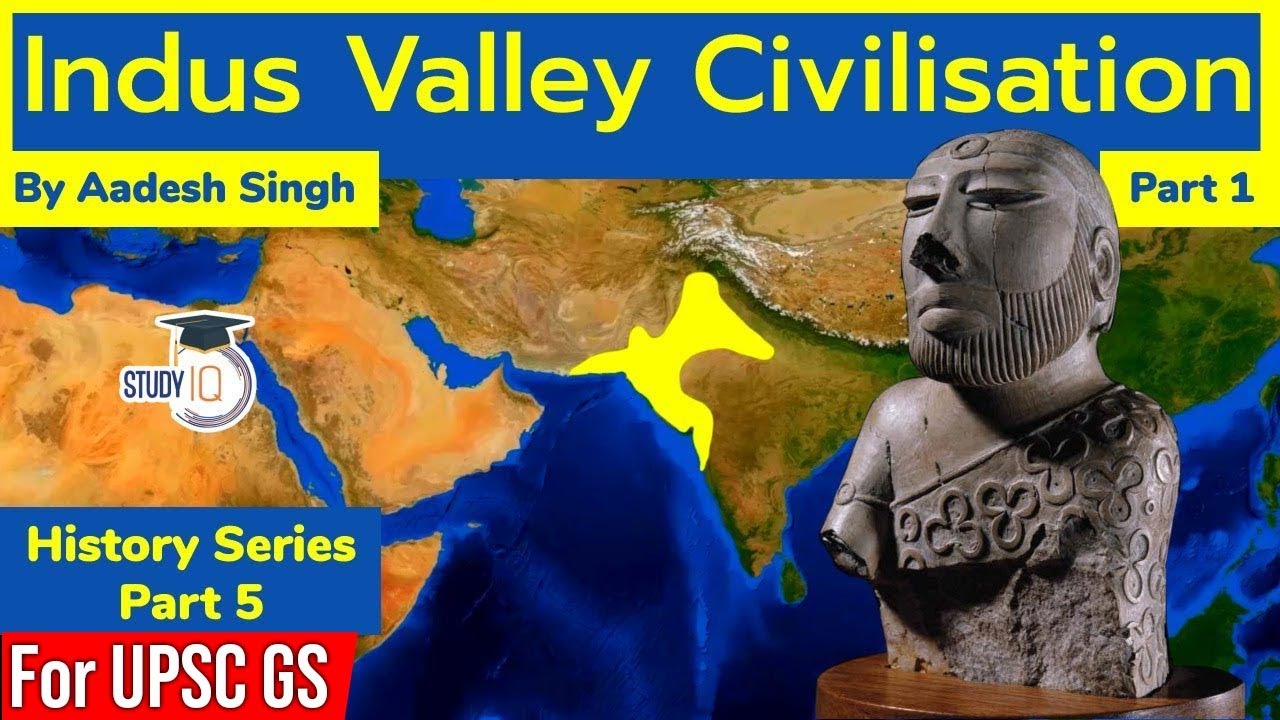Indus Valley Civilization: Important Sites | Complete Ancient History Through Animation | By Aadesh
Summary
TLDRThe video script delves into the Indus Valley Civilization, highlighting its major archaeological sites, architecture, and cultural elements. It discusses the significance of sites like Harappa and Mohenjo-daro, the civilization's political system, economy based on agriculture and trade, societal structure, religious practices, and the Harappan script. The script also explores various theories surrounding the civilization's decline, including climate change, tectonic activity, and trade collapse, concluding with the emergence of post-Harappan cultures and their impact on Indian society.
Takeaways
- 🏙️ The Indus Valley Civilization is considered to be one of the most important parts of our history, with major excavations such as Harappa, Mohenjo-daro, and Dholavira.
- 🌾 Agriculture was the main economic activity in the Indus Valley, with the region's fertility being a major factor, evidenced by the use of burnt bricks in flood control.
- 🌱 The main crops in the Indus Valley included wheat, barley, sesame, mustard, and cotton, with evidence of cotton production found at Mohenjo-daro.
- 🐃 Animal domestication was common, with oxen, buffaloes, goats, sheep, pigs, and humped zebu cattle being part of the local fauna.
- 🛍 Trade and commerce were crucial to the Indus Valley economy, with goods such as pottery, gold, silver, beads, shells, and precious stones being traded.
- 🏛 The architectural magnificence and uniformity of the Indus Valley Civilization suggest a centralized political system with massive structures and town planning capabilities.
- 👥 The society of the Indus Valley Civilization likely had a well-established social hierarchy, with differences in settlement sizes and the quality of artifacts indicating regional divisions.
- 👘 The civilization had a unique fashion sense, with evidence of beadwork, ornaments, and a variety of clothing styles and hairdos.
- 🙏 There is no clear evidence of religious structures other than the Great Bath, but the people likely had religious practices, possibly including the worship of fertility goddesses and Pashupati Mahadeva.
- 📜 The Indus script is pictographic and has not been decoded, but it shows a unique writing style that was used for administrative and commercial purposes.
- 💀 The burial practices of the Indus Valley Civilization included extended human burials and double burials, with some evidence suggesting social stratification and afterlife beliefs.
Q & A
What is the significance of the Indus Valley Civilization in history?
-The Indus Valley Civilization is significant as it is one of the world's earliest urban civilizations, with major architectural and cultural elements that provide insights into its society, politics, and economy.
What are some of the important sites in the Indus Valley Civilization?
-Important sites include Harappa, Mohenjo-daro, and Dholavira, which are known for their urban planning, granaries, and unique seals and artifacts.
What evidence of trade is found at Harappa?
-At Harappa, there is evidence of trade in the form of uniform seals, weights and measures, and artifacts like terracotta pots, which indicate a well-established trade network.
What was the role of the city of Lothal in the Indus Valley Civilization?
-Lothal was an important port city in the Gulf of Khambhat and played a crucial role in trade, with its large dockyard and bead industry, which was part of a vast trade system.
What does the archaeological evidence suggest about the political system of the Indus Valley Civilization?
-The archaeological evidence suggests a centralized political system with massive structures and town planning capabilities, indicating a ruling class with the ability to mobilize labor and resources.
How did agriculture contribute to the economy of the Indus Valley Civilization?
-Agriculture was a major economic activity due to the region's fertility, with crops like wheat, barley, rice, and cotton being cultivated, which also supported animal domestication and trade.
What was the significance of the Great Bath in Mohenjo-daro?
-The Great Bath in Mohenjo-daro is a significant architectural feature, possibly used for public bathing or religious rituals, reflecting the civilization's advanced urban infrastructure.
What are the theories regarding the decline of the Indus Valley Civilization?
-Theories regarding the decline include invasion or migration, climate change, tectonic activity, and trade collapse due to political crises in Mesopotamia.
What evidence is there for the practice of religion in the Indus Valley Civilization?
-Religious practices are inferred from the presence of the Great Bath and various terracotta figurines, suggesting the worship of fertility goddesses and other deities.
What was the script used by the Indus Valley Civilization, and what is known about it?
-The Indus script is pictographic, with symbols that were used in a writing style known as boustrophedon, but it remains undeciphered and its language is unknown.
How did the society of the Indus Valley Civilization practice burials, and what does this indicate about their social structure?
-Burial practices included extended inhumation and double burials, with evidence of pottery and other artifacts, suggesting a social hierarchy and possibly sacrificial practices.
Outlines

Этот раздел доступен только подписчикам платных тарифов. Пожалуйста, перейдите на платный тариф для доступа.
Перейти на платный тарифMindmap

Этот раздел доступен только подписчикам платных тарифов. Пожалуйста, перейдите на платный тариф для доступа.
Перейти на платный тарифKeywords

Этот раздел доступен только подписчикам платных тарифов. Пожалуйста, перейдите на платный тариф для доступа.
Перейти на платный тарифHighlights

Этот раздел доступен только подписчикам платных тарифов. Пожалуйста, перейдите на платный тариф для доступа.
Перейти на платный тарифTranscripts

Этот раздел доступен только подписчикам платных тарифов. Пожалуйста, перейдите на платный тариф для доступа.
Перейти на платный тарифПосмотреть больше похожих видео

सिंधु घाटी सभ्यता | हड़प्पा सभ्यता | Indus valley civilization | sindhu ghati | study vines official

Indians | Ep 1: The Harappans | A Brief History of a Civilization

Indus Valley Civilization (IVC) Geography | Complete Ancient History Through Animation | By Aadesh

Hiphop Tamizha - #Tamizhi | Episode 5 | Indus Valley Civilization

Indus Valley Civilization Part 1 - Ancient India History for UPSC | Harappa Civilization

History Explored: Ancient Civilizations Around the World | EXPLORE MODE
5.0 / 5 (0 votes)
